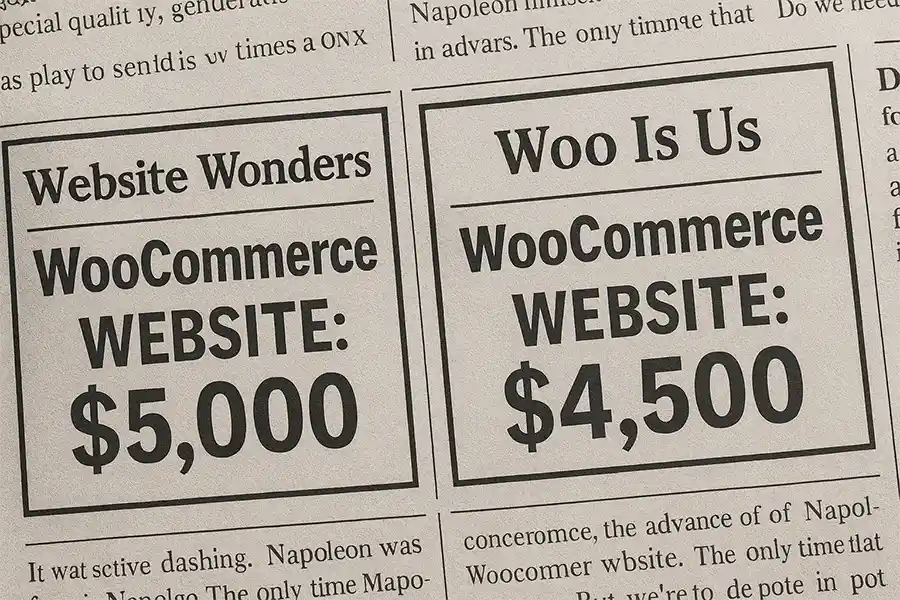Freelancers can choose their own business policies. We can determine how we work, when we work, and how much we charge. That last one can be difficult, to say the least.
Pricing has confounded many a small business owner. Choosing what to charge for your service is only one part of the equation, however. You must also decide how to communicate those figures with others.
Here’s a common challenge: Should you have a pricing page on your portfolio website? This information is a staple for many industries. For instance, everyone expects to know the price of a cup of coffee at their neighborhood shop. People looking for a salon will want to see a price list, as will those booking a cleaning service.
But creative fields like web design are different. We don’t traditionally sell one-size-fits-all commodities, although the industry is shifting. Even so, there are endless ways to build a website. Website maintenance pricing can also vary based on multiple factors.
However, that hasn’t stopped some web professionals from advertising their pricing. That alone makes it a topic worth discussing. An ever-changing industry and evolving client expectations also play a role.
With that, here’s a look at the good and bad of upfront pricing.
Pricing Doesn’t Need to Be Exact
Odds are that no two types of web projects will be priced the same. For example, a five-page brochure website costs less than a 100-site WordPress Multisite network. Adjacent services, such as web hosting, also depend on the project’s size and scope.
That’s a challenge for all but the narrowest of niches. As such, it seems nearly impossible to advertise exact pricing. Perhaps that’s not such a big deal.
There’s something to be said for advertising “ballpark” figures, ones that provide a price range. For one, it helps to weed out low-budget clients. Think of all the time you’ll save!
A price range, or even a “starting at” price, sets the right expectations. Potential clients will have a better idea of costs, while you’ll benefit from a buffer to work within. Just be sure to set a starting price that offers a comfortable profit margin.
In all, transparency is a good thing for your business. This is one way to demonstrate your commitment to being open with clients.

The Pitfalls of Publishing Your Prices
There are a few notable downsides to publicly sharing your pricing. For one, it’s information that competitors can use to their advantage.
If you’re charging $5,000 for a WooCommerce build, then another agency could undercut your price. Even a small discount could cause a client to go with your rival. From there, it becomes a race to the bottom. You might lower your price until there’s little margin to work with.
Public pricing may also complicate things when working on a project estimate. A client may not understand why their estimate is higher than what you advertised. That requires a delicate conversation about the factors involved.
The alternative is to eat the extra cost and hope that things even out. Some projects may require less work, while others take more resources. That’s a dangerous way to live, as you might be leaving money on the table.
Client perception is also a concern. There’s a risk to being seen as too expensive or too cheap. For instance, lower pricing may make some clients see you as inexperienced or low quality. It’s not fair, but people have been known to make snap judgments.
So, if you’re going to publish your prices, be aware of the potential pitfalls. Perhaps they’re worth it, or not. That’s for you to decide.

Is It the Right Move for Your Web Design Business?
The decision to publish your pricing comes down to your individual goals. For instance, making them public might be a way to advertise a new service or a flash sale. That won’t apply to every business, however.
Before you hit the “publish” button, ask yourself the following questions:
- How does pricing fit into my overall marketing strategy?
- Will it give me an advantage in attracting new clients?
- What are the potential downsides?
The important thing is to know why you’re publishing your pricing. Doing so should serve a purpose, even if it’s a temporary experiment. You’ll also want to acknowledge the risks involved.
In all, upfront pricing is still a difficult subject for freelancers. There’s no universally right or wrong answer.
Our best advice is to consider your options carefully and go with what makes sense for your business.
Related Topics
Top